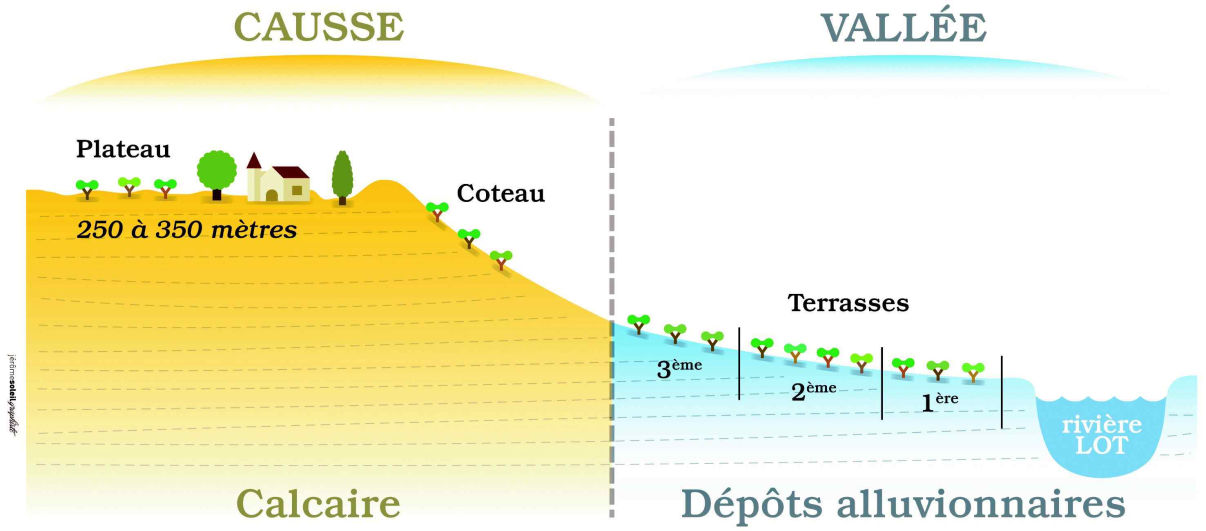On the geologic plan, the Cahors vineyard is planted on two large types of soil. One soil situated in the valley formed by the three alluvial terraces of the Lot river, is bordered by a line of calcareous boulders at the foot of the limestone plateau. The second, the Causse, is situated on the plateau on limestone sometimes covered with siderolithic formations.
In the valley, the first terrace, richer in water, gives fruity wines; the second, gives rounder wines and the third, with a better drainage, gives the most structured wines, with aging quality.
Le vignoble du causse quant à lui possède une terre moins fertile que celle de la vallée. Les sols sont très drainants, les racines doivent plonger profondément pour trouver l'eau. La vigne est habituée aux conditions extrêmes et résiste mieux aux périodes climatiques difficiles. Les plateaux produisent des vins moins charnus mais très fins.
